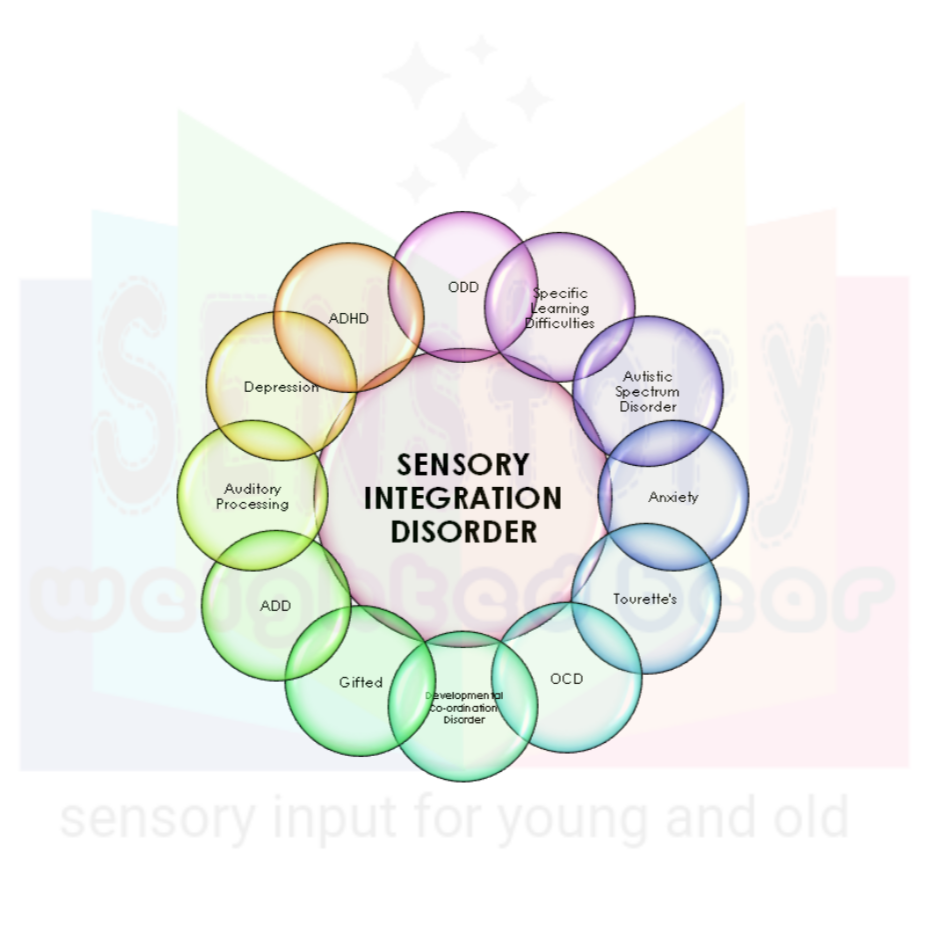Sensory Integration is the process your central nervous system goes through when it takes information in from the environment and your body’s eight senses, processes that information, and then responds accordingly.
Unless you happen to have sensory processing difficulties, in which case your nervous system struggles or fails to process all that incoming information.
Your body takes information in through 8 sensory systems:
auditory (sound/hearing)
visual (sight)
olfactory (smell)
gustatory (taste)
tactile (touch)
vestibular (movement)
proprioceptive (input from muscles and joints)
interoception (internal sensors indicating physiological conditions)
The different parts of our body that receive sensory information from our environment (our skin, eyes and ears etc) send this information up to our brain.
Our brain interprets the information it receives, compares it to other information coming in as well as information stored in our memory and then uses all of this information to help us respond to our environment.
Sensory integration is important in all the things that we need to do each day such as getting dressed, eating, socialising, learning and working.
For most of us the development of sensory integration occurs while we are young as part of our other development and in the things we do such as rolling, crawling, walking and during play, for others sensory integration is less well developed, this is sometimes called sensory processing disorder (SPD).
Parham and Mailloux (2015) identified four categories of sensory integration problems:
1) Sensory modulation problems
2) Sensory discrimination and perceptual problems
3) Vestibular bilateral functional problems
4) Praxis problems Sensory Modulation problems
Problems with sensory modulation occur when our brain either over responds to, or under responds to sensory information. For example, if someone over responds to touch they may be very aware of the seams in their clothing to the point of distraction or physical pain. If someone is under responsive to touch they may not notice someone tapping them on the shoulder or bumping into something.
It has been found that people can be over responsive in one sense and under responsive in another, that people can be over responsive or under responsive in all 8 different senses.
For some people they can even be over responsive and under responsive within the same sense.
Responsiveness can be dependent on a situation, for example a stressful situation can make us more or sometimes less aware of sensation.
So what does all that actually mean? In basic terms it means that sensory input can be overwhelming for people who have sensory processing difficulties, the way in which each person responds to sensory input can vary depending on many factors, so somebody could be fine one day walking around a busy town but the next day find the same situation totally overwhelming.
Different people are also effected in different ways by different inputs. Some inputs help to calm and sooth, others overwhelm. Which is why it's so difficult to to find strategies that help everybody who has these difficulties, there is no 1 size fits all solution.

